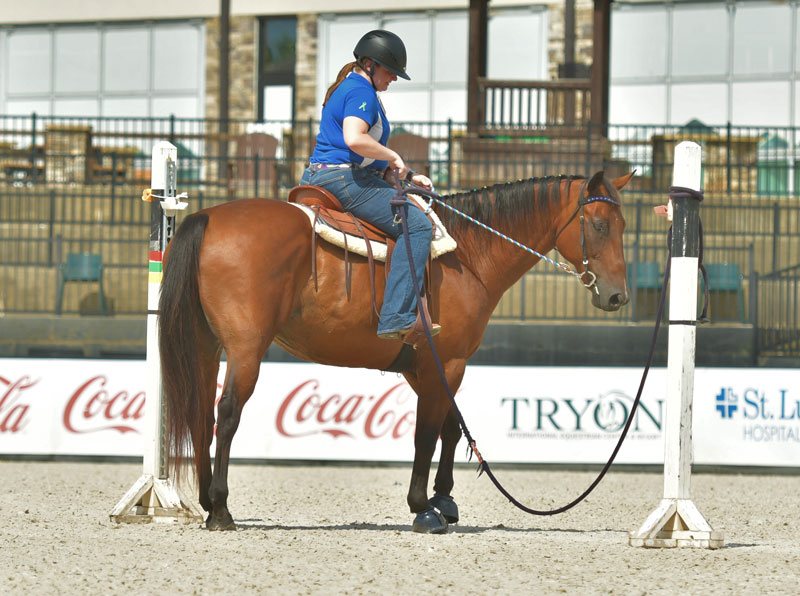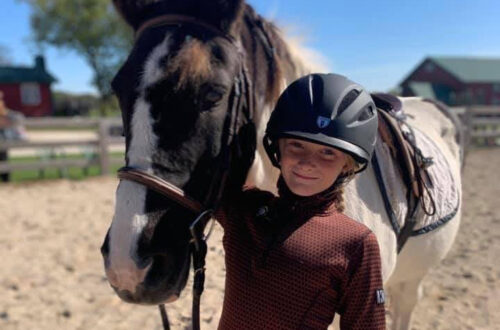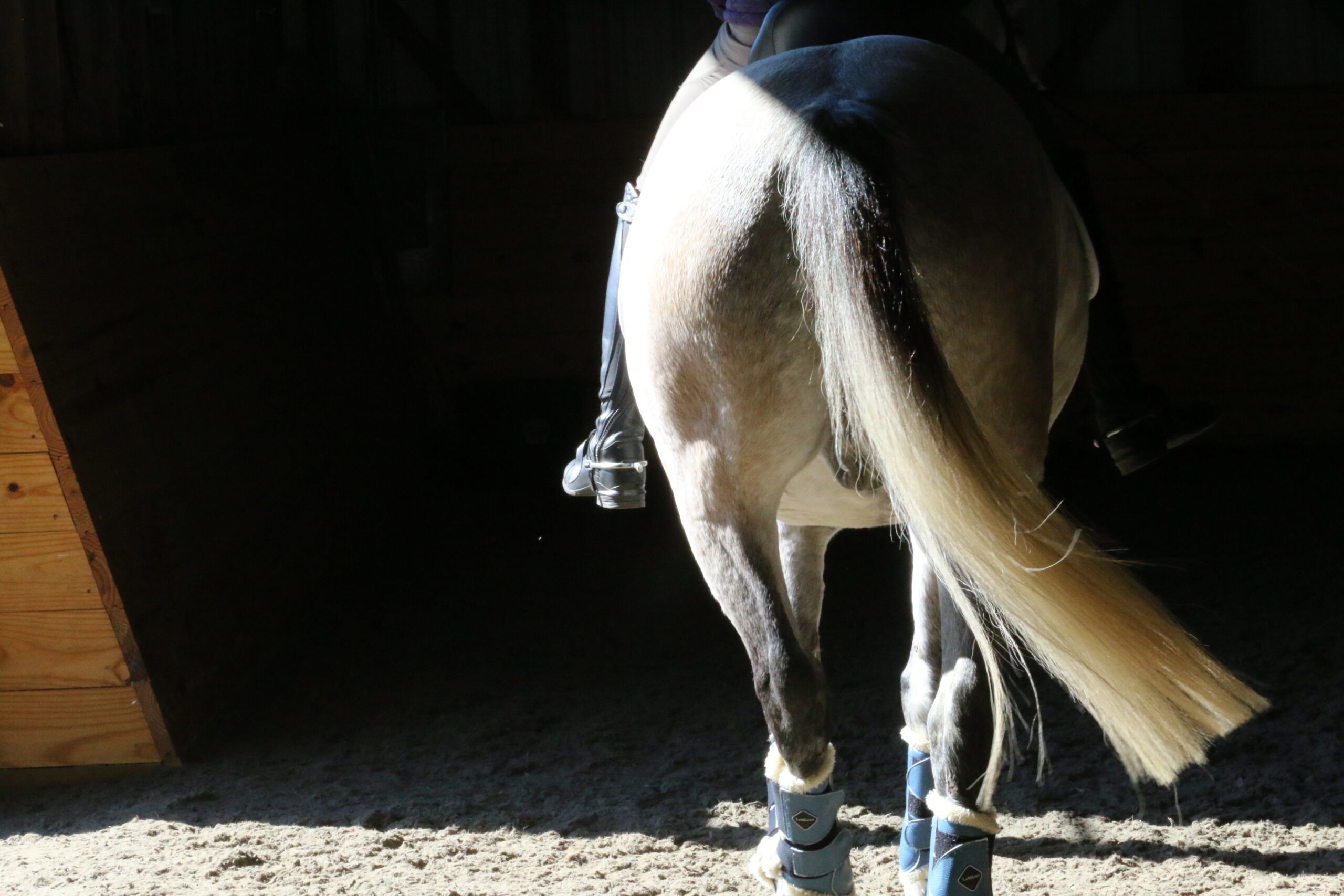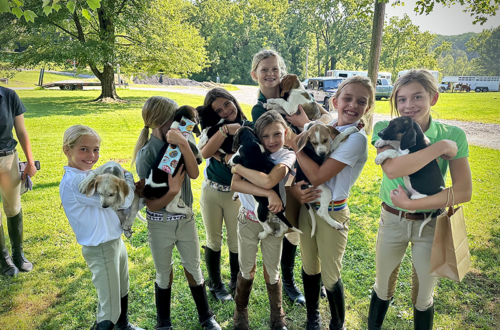
Give USPC Trail Competition a Try
A Pony Club member shares how she prepared for the open Trail competition at the 2022 USPC Championships East.
By Diana Jacobs, C-1 Eventing, H-B, Stones River Pony Club, Midsouth Region
Last summer, I took my retired event horse to the 2022 USPC Championships East at the Tryon International Equestrian Center in North Carolina and competed in the Western Trail Invitational. You may also be interested in giving this a try, but have some questions, such as: Does my horse have the right temperament? Do you have to ride Western? What even happens at a Trail competition? Hopefully I can help answer some of these questions.
The Right Horse for the Job
My horse Scotty evented through the Preliminary Level, and he had been retired for a year. He was never really spooky, but he only liked to move fast on cross-country, and he loved to jump whatever was in his line of vision. His willingness to try anything made him the perfect partner to try a new style of riding that we had never done before. However, you do not have to have a bombproof horse to do Trail. Trail is a great way to expose your horse to new stimuli in a controlled environment.
Discover the USPC Trail Discipline
The USPC discipline of Trail, formerly known as Western Trail, involves picking up objects, negotiating a variety of obstacles, and working with your horse to move in a specific pattern. A lot of the pattern involves the horse being able to move off the rider’s leg. There are a number of things you can be asked to do, and many of these are similar to the sport of working equitation. There are several types of rounds that you may be asked to do including Classic Trail, Ranch Trail, In the Open, and Speed.
The obstacles and patterns vary slightly based on the type, but for the most part, they are very similar. The Classic Trail and Ranch Trail rounds are done in the arena, and you may be asked to open a gate, trot over poles, or walk through a chute or over a bridge. The In the Open round is performed outside of the arena. You will be asked to step over small logs, move up and down hills, walk past and through ditches or water obstacles, and ride at all three gaits in the open. The In the Open course can be a few miles long, so conditioning is imperative for this phase.
Conditioning for USPC Trail Competition
So, what does conditioning for USPC Trail competition look like?
It is slightly different than conditioning for an event, but it shares many similarities to conditioning for endurance or cross-country. I brought my horse out of complete retirement and into peak condition in 33 days for the Level 1 competition. I do not recommend conditioning in such a short timeframe under normal circumstances, but it is possible with the right conditioning schedule and a previous base of fitness. (Check with your vet, Pony Club instructor, or an experienced horse person if you are new to conditioning work).
I owe much of Scotty’s condition to the geography of his pasture and his field mates, who would force him to take a morning canter around the field. We did a lot of hill work and a lot of long, slow distance work. Scotty is older and has had a bit of wear-and-tear to his joints due to his past career, so I wanted to keep his conditioning as low-impact as possible. Not only that, but I also had to consider that I was conditioning in Kentucky in the middle of June—it was hot and humid!
I developed a conditioning schedule that consisted of two days of skill drills; two days of long, slow distance rides; and two days of trot/canter sets. The first two weeks, I kept it strictly to trot sets, and I was very diligent about watching his vitals and allowed him to tell me when he was ready to add canter sets. For our long, slow distance work, we would go on a trail ride. The entire time we were conditioning, we went into an arena twice. This schedule allowed for so much cross-training, and on a horse like Scotty, who gets overwhelmed when we are drilling specific skills that are tough for him for long periods of time, this allowed for mental breaks throughout the week and allowed his body to use different muscle groups. Trail rides are also a great way to allow your horse to just relax and do something away from the arena that is still conditioning.
Trail Competition at USPC Championships
Scotty and I absolutely loved competing in the Western Trail Invitational at the 2022 USPC Championships. The competition was “open,” meaning anyone could enter—even non-Pony Club members. It was a great way to participate at Championships and try something new without the pressure of having to qualify. The conditioning helped strengthen Scotty’s dressage and response to aids, and he enjoyed it. While I trained Scotty for Western Trail, you do not have to ride western! Pony Club also allows you to do Trail in English tack. Trail is a really great way to desensitize a young horse or cross-train an older horse, and you do not have to have previous experience to do Trail. Trail is a fun way to try something new and explore different disciplines.
For more information, visit the Trail discipline page on the Pony Club website and find the current rulebook and newsletter updates here. Check out all the USPC disciplines for even more cross-training ideas.
All About the Trail Disciplines in U.S. Pony Clubs
Trail in USPC combines the best elements of the numerous competitive Trail organizations. Trail rallies generally include three competition rounds, which may occur include or outside a competition arena. Members compete on a team of three to four riders with a Stable Manager, and their individual scores combine with team horse-care scores for final placings. |





